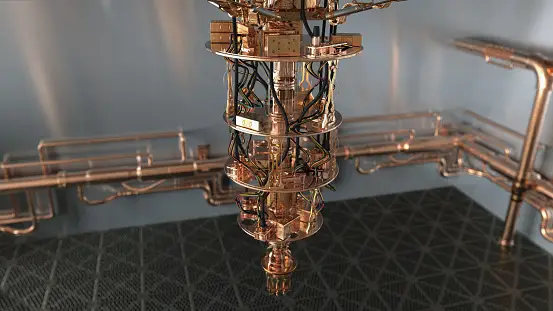
By Brian Siegelwax posted 13 Mar 2024
The Classiq Platform offers simple ways to synthesize massive quantum circuits for complex algorithms. In fact, you can quickly and easily synthesize circuits so massive that your target quantum computer will return an error. It might not even return “noise” from running circuits so deep, but errors indicate that these circuits can’t run at all.
The problem has three tiers. Even with small quantum circuits, every operation introduces a chance of error. As errors accumulate, the results quickly become useless. As the circuits get larger, you risk reaching the limits of how long quantum information can be maintained, which means an algorithm doesn’t have time to complete. Imagine wanting to watch a 20-minute YouTube video with only 5 minutes of battery life; you can’t do it. You can’t plug in the quantum computer, nor can you recharge and continue; you simply can’t run the entire algorithm in time. And as the circuits get downright massive, there’s often an aforementioned error message indicating that the control system won’t even attempt to execute the algorithm.
The Classiq team now seems to be suggesting that the platform not only synthesizes massive circuits, but that it does so more efficiently than Qiskit, the most popular quantum computing framework. This assertion is important for four reasons: 1) shallower circuits execute faster than deeper circuits, 2) faster runtimes can save significantly on costs when billing is based on runtime, 3) fewer operations mean fewer errors requiring correction, and 4) as quantum computers mature and can run larger algorithms, the smaller circuits will become useful first.
There is a Classiq notebook that compares the Classiq Platform to Qiskit using the HHL algorithm. If we want to see differences in efficiency, the HHL algorithm is massive enough to highlight those differences.
The HHL Algorithm
The Harrow–Hassidim–Lloyd algorithm, or HHL algorithm, promises to solve systems of linear equations with an exponential speedup over the best-known classical algorithms. These equations enjoy widespread applicability in science and engineering.
The problem is that HHL circuits, even with the smallest toy problems, are incredibly deep. If you want to demonstrate circuits returning errors instead of results on current quantum computers, this is the algorithm to attempt that with.
The Classiq Notebook
We’re looking at the three key metrics: fidelity, circuit depth, and CX count. Fidelity is how close the result is to an exact solution; because of the size of the circuits, everything has to be calculated classically. Circuit depth indicates how many time steps are needed to implement all the operations, pushing or exceeding the limits of current quantum computers. CX counts indicate the number of multi-qubit operations, as these are exceptionally error-prone.
| Classiq | Qiskit | |
| Fidelity | 99.99999999896276% | 99.99998678594436% |
| Circuit Depth | 3527 | 81016 |
| CX Count | 1978 | 159285 |
The Classiq circuit shows better fidelity with far less circuit depth and far fewer CX operations. While it’s still too massive to run, it’s far closer to being useful than Qiskit’s circuit. Importantly, the classically-calculated fidelity highlights that Classiq’s circuit is not just smaller, but that it is, in fact, still designed to solve the selected problem at this reduced size.
Natural Skepticism
The problem with trusting Classiq’s notebook, is that the Classiq team not only provides their own solution, but they also provide Qiskit’s solution. They obviously want the Classiq Platform to look good, so it is important to verify their claim against an implementation of HHL that uses Qiskit but that was not developed by the Classiq team.
Qiskit’s Notebook
The easiest to find implementation is Qiskit’s HHL tutorial, which allows Classiq’s problem to be solved using the Qiskit team’s code. This notebook includes two approaches, one that generates larger circuits but is more accurate and one that generates smaller circuits by sacrificing accuracy.
| Classiq | Classiq’s Qiskit | Qiskit Naive | Qiskit Tridi | |
| Circuit Depth | 3527 | 81016 | 272759 | 40559 |
| CX Count | 1978 | 159285 | 127360 | 25812 |
Not only is the Classiq circuit significantly smaller than all three Qiskit circuits, but it also requires one fewer qubit than Qiskit’s Naive and Tridi circuits.
Due to their high fidelities, Classiq’s Qiskit implementation is better compared to the Qiskit Naive implementation than the Qiskit Tridi implementation. Even though the CX count is 25% higher, the circuit depth is 70% lower using one fewer qubit. If we had error-corrected quantum computers today, this means that Classiq’s Qiskit implementation would run faster and incur lower hardware access costs than Qiskit’s own high-fidelity implementation.
Conclusion: Classiq Holds Up
At least for this specific instance, Classiq’s claim holds up. Not only is HHL easy to implement, but the difference in circuit size is substantial. Classiq’s circuit will not only run faster than three Qiskit alternatives, it will cost less through IBM Quantum. And as quantum computing hardware improves, Classiq’s implementation will be the first of the four here to become useful.
Brian N. Siegelwax is an independent Quantum Algorithm Designer and a freelance writer for Inside Quantum Technology. He is known for his contributions to the field of quantum computing, particularly in the design of quantum algorithms. He has evaluated numerous quantum computing frameworks, platforms, and utilities and has shared his insights and findings through his writings. Siegelwax is also an author and has written books such as “Dungeons & Qubits” and “Choose Your Own Quantum Adventure”. He regularly writes on Medium about various topics related to quantum computing. His work includes practical applications of quantum computing, reviews of quantum computing products, and discussions on quantum computing concepts.
- SEO Powered Content & PR Distribution. Get Amplified Today.
- PlatoData.Network Vertical Generative Ai. Empower Yourself. Access Here.
- PlatoAiStream. Web3 Intelligence. Knowledge Amplified. Access Here.
- PlatoESG. Carbon, CleanTech, Energy, Environment, Solar, Waste Management. Access Here.
- PlatoHealth. Biotech and Clinical Trials Intelligence. Access Here.
- Source: https://www.insidequantumtechnology.com/news-archive/efficient-synthesis-of-massive-quantum-circuits-an-overview-of-the-classiq-system/
- :has
- :is
- :not
- $UP
- 1
- 13
- 2024
- 7
- a
- About
- access
- Accumulate
- accuracy
- accurate
- against
- algorithm
- algorithms
- All
- allows
- also
- alternatives
- an
- and
- applications
- approaches
- ARE
- AS
- At
- attempt
- author
- based
- battery
- Battery life
- BE
- because
- become
- being
- Better
- billing
- Books
- Brian
- but
- by
- calculated
- CAN
- categories
- Chance
- claim
- Classiq
- Close
- closer
- code
- compared
- complete
- complex
- computer
- computers
- computing
- concepts
- continue
- contributions
- control
- Cost
- Costs
- count
- Current
- CX
- deep
- deeper
- demonstrate
- depth
- Design
- designed
- Designer
- developed
- difference
- differences
- discussions
- do
- does
- Doesn’t
- easiest
- easily
- easy
- Effective
- efficiency
- efficient
- efficiently
- Engineering
- enjoy
- enough
- Entire
- equations
- error
- Errors
- evaluated
- Even
- Every
- everything
- exact
- exceeding
- exceptionally
- execute
- exponential
- fact
- far
- faster
- fewer
- fidelity
- field
- Find
- findings
- First
- For
- four
- Framework
- frameworks
- freelance
- from
- generates
- get
- good
- had
- Hardware
- Have
- he
- here
- High
- higher
- Highlight
- highlights
- his
- holds
- How
- HTTPS
- IBM
- ibm quantum
- if
- image
- imagine
- implement
- implementation
- important
- importantly
- improves
- in
- includes
- incredibly
- independent
- indicate
- indicates
- indicating
- information
- inside
- Inside Quantum Technology
- insights
- instance
- instead
- Introduces
- IT
- just
- Key
- known
- larger
- least
- less
- Life
- limits
- linear
- Long
- Look
- looking
- lower
- maintained
- many
- mar
- massive
- mature
- max-width
- mean
- means
- medium
- message
- Metrics
- might
- Minutes
- more
- most
- Most Popular
- naive
- needed
- notebook
- now
- number
- numerous
- of
- Offers
- often
- on
- ONE
- only
- operation
- Operations
- or
- over
- overview
- own
- particularly
- platform
- Platforms
- plato
- Plato Data Intelligence
- PlatoData
- plug
- Popular
- posted
- Practical
- Problem
- problems
- Products
- promises
- provide
- provides
- Pushing
- qiskit
- Quantum
- quantum algorithms
- Quantum Computer
- quantum computers
- quantum computing
- quantum information
- quantum technology
- Qubit
- quickly
- reaching
- reasons
- Reduced
- regularly
- related
- requires
- result
- Results
- return
- returning
- Reviews
- Risk
- Run
- running
- runtime
- s
- sacrificing
- Save
- Science
- see
- seems
- selected
- shared
- Shows
- significantly
- Simple
- simply
- Size
- small
- smaller
- So
- solution
- SOLVE
- specific
- Steps
- Still
- substantial
- such
- synthesis
- synthesize
- system
- Systems
- Target
- team
- Technology
- than
- that
- The
- their
- These
- they
- this
- those
- though?
- three
- Through
- time
- to
- today
- too
- Topics
- true
- trusting
- two
- useful
- useless
- uses
- using
- utilities
- various
- verify
- Video
- want
- wanting
- was
- Watch
- ways
- we
- webp
- when
- which
- while
- widespread
- will
- with
- Work
- would
- writer
- writings
- written
- You
- Your
- youtube
- zephyrnet













